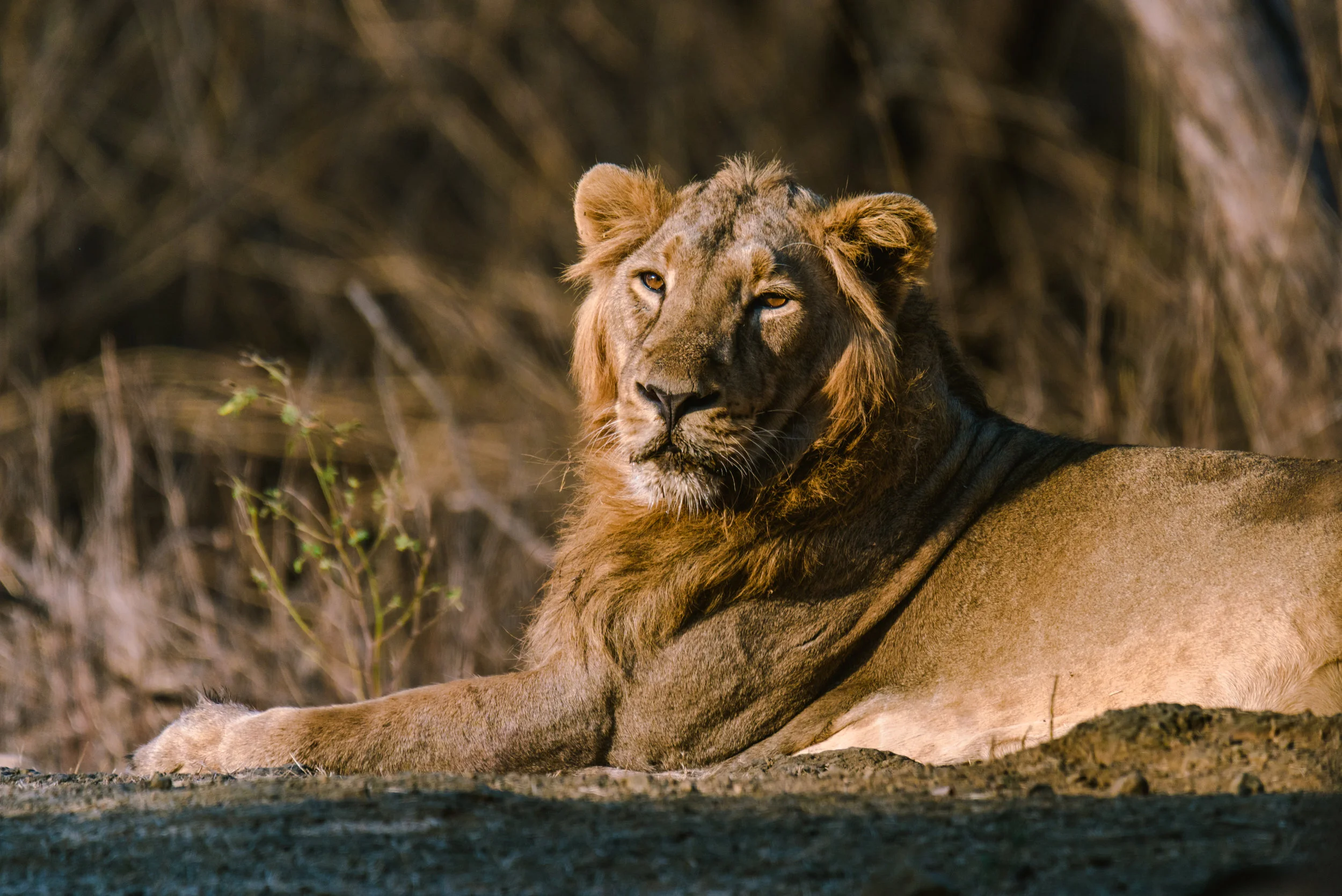Asiatic Lion
"Road Warrior" by Brynn Metheney (pencil and gouache)
“I learned to draw by opening up a book on drawing big cats and tracing the images inside. The book was called Big Cats in Action and I wore the book out until it was just pages I kept in a folder. Big cats have always been dear to me so I had to choose one from the list. The Asiatic Lion is lesser known than the larger African Lion but it is just as beautiful. In my piece, I wanted to depict a glimpse the dirt roads that you so often see these lions on. So often as artists do we depict animals in pristine environments and completely wild places when the reality can be the opposite. We forget that many of these animals are living right up against human activity and I wanted to show a bit of that in my image.”
Your purchase is helping Expedition Art and Saving Species purchase land in Sumatra! Learn more about the project.
Habitat
Asiatic lions live in the Gir Forest National Park in India, a wildlife sanctuary on 877 square miles of land, which includes a deciduous forest, grasslands, scrub jungle and rocky hills. The Gir Forests dry teak woods used to be a royal hunting ground. Today, the park serves a different purpose: to protect and help ensure the survival of these at-risk big cats.
Family Life
Asiatic lion prides differ from those of their African counterparts in that their prides are separated by gender: male lions and female lions have their own prides and come together only to mate.
Lifespan
The average life span of the Asiatic lion in the wild is 16 to 18 years.
Hunting Habits/Diet
The Asiatic lion is a carnivore whose typical diet consists of deer, antelope, goats, wild boar and buffalo. Female lions are the providers for their families. They form groups to hunt, generally at night, as they spend the vast majority of their days resting. Baby lions do not contribute to hunting prey until they reach one year of age. Solitary hunting is not completely out of the question, given the opportunity.
Population
Today, an estimated 500 Asiatic lions exist in the wild.
Fun Fact
The Asiatic lion is also known as the Indian lion. A lion’s heels do not touch the ground when they walk; they essentially walk on their tiptoes! Asiatic lions are the second largest feline species in the world (tigers are the first).
Why are they Endangered?
The remaining Asiatic lions are vulnerable to disease, disaster, poaching and competition for territory with a growing human population that uses their land for cattle and crops. About 40% of the total lion population now lives outside the forest area. As a result, open wells and live wires on farms, passing trains and trucks have caused many fatalities.
Status
Endangered


